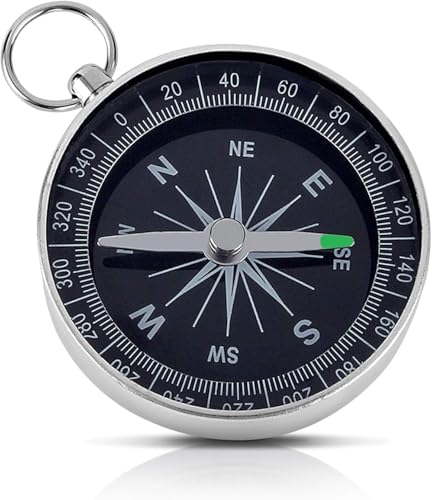The Fascinating Story Behind the Compass: A Historical Overview
The First Discovery: Origin of the Compass
The compass was initially discovered in ancient China, more than two thousand years ago. It is believed that the magnetic needle was first developed in the Han Dynasty (206 BCE to 220 CE). The compass was created by stringing a piece of magnetized iron into a needle, and then placing it on a floating object in water. The needle would align itself with the Earth’s magnetic field, hence providing direction.
The Spread of Compass Technology
After its discovery in China, the compass rapidly spread to the rest of the world. During the Arab Golden Age in the medieval era, Muslim inventors developed the magnetic compass and brought it to Europe. They introduced the compass to Mediterranean navigators who used it to guide their ships in open seas. This enabled extensive exploration, discovery, trade, and expansion of European empires like Spain, Portugal, and the Netherlands.
The Applications of the Compass in Navigation
The compass instrument helped seafarers to determine their ship’s orientation and direction concerning the Earth’s magnetic field. It was invaluable in navigation and enabled sailors to better understand the Earth’s geography. With the compass, sailors could determine their latitude position and estimate their distance from the equator. The compass also provided greater resilience and independence to sailors, reducing their reliance on coastal landmarks for direction and allowing them to venture further away from the coast.
The Technological Advancements in Compass Design
The first compasses were relatively simple, often cylindrical in shape, and used magnets made from lodestone. However, during the 19th century, there were significant advancements in compass technology. For instance, in 1835 a Frenchman named Vachey created a liquid compass that replaced the steel needle with a pivoting dial immersed in a liquid. The advantage of this design was increased accuracy since the liquid’s damping effect decreased the needle’s oscillation. Later, the invention of gyrocompasses provided a more advanced technology in compass design capable of withstanding ship oscillations while providing better directional accuracies.
Recent Developments with Compass Technology
Nowadays, there are electronic compass systems that rely on highly sensitive sensors instead of magnetized needles. Devices containing electronic compass technology, like smartphones, have become ubiquitous and come with the facility to detect the mobile device’s orientation relative to the Earth’s magnetic field. The latest developments involve integrating compass technology with GPS to provide highly accurate positioning systems as well as with augmented reality technology, which provides a highly immersive user experience.






